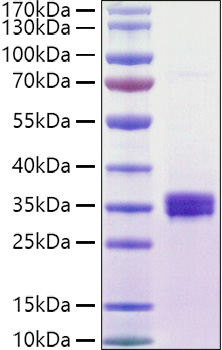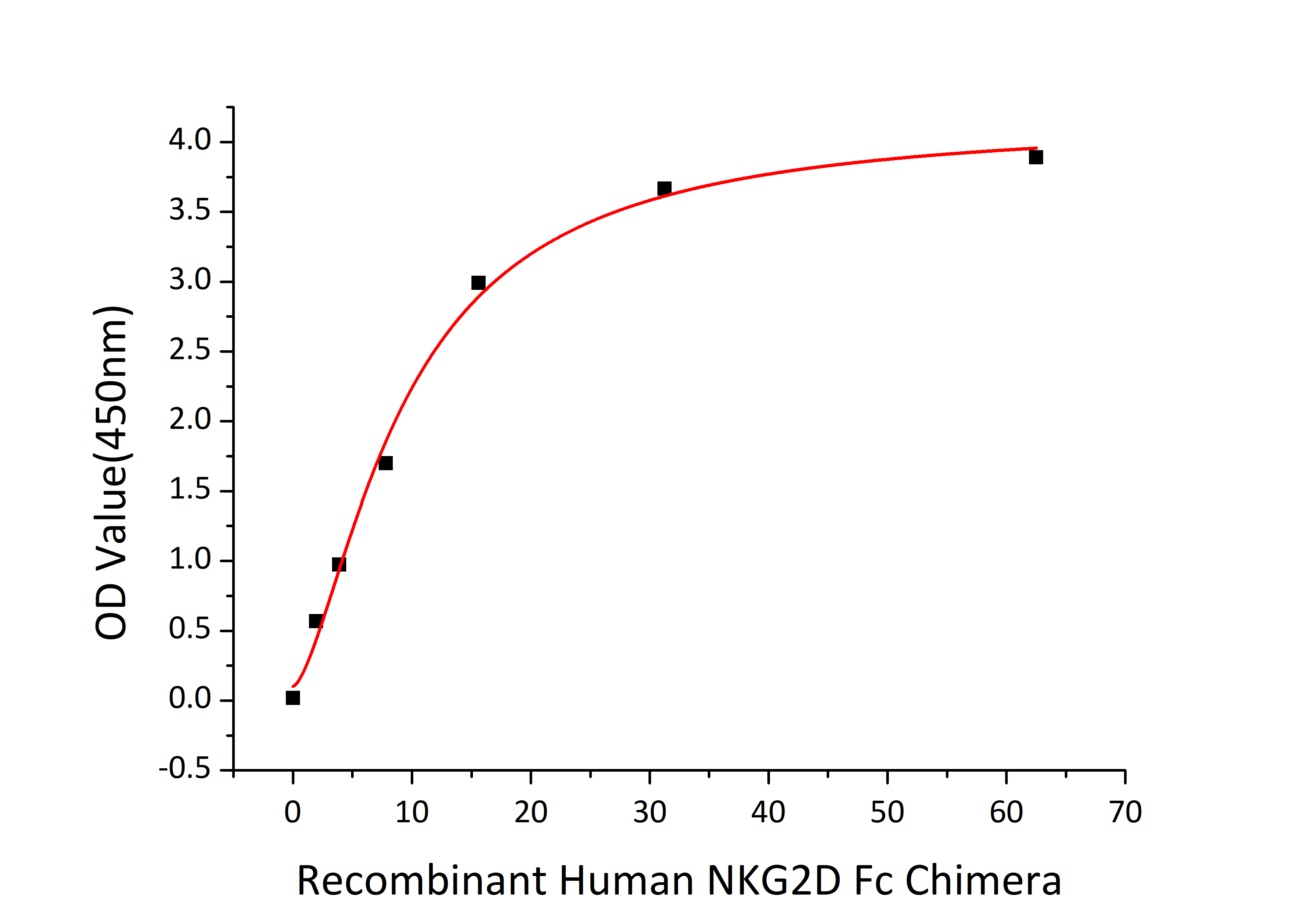Description
Recombinant Human NKG2D ligand 1/ULBP1 Protein
The Recombinant Human NKG2D ligand 1/ULBP1 Protein is a biologically active recombinant protein that plays a significant role in various cellular processes and signaling pathways in human biology. This protein is widely employed in immunological research, cell biology studies, protein-protein interaction analyses, and therapeutic development, providing researchers with a reliable tool for investigating NKG2D ligand 1/ULBP1 function and its implications in health and disease.
This product (SKU: RPCB0958) is produced using HEK293 cells and features a C-His&Avi tag for convenient detection and purification. The protein exhibits a calculated molecular weight of 24.92 kDa with an observed molecular weight of 32-38 kDa under denaturing conditions, achieving ≥ 95 % as determined by SDS-PAGE.. Functional bioactivity has been validated through rigorous quality control assays, confirming its suitability for demanding research applications.
Key Features
| High Purity by Affinity Chromatography | |
| Mammalian & Bacterial Expression Systems | |
| High lot-to-lot consistency via strict QC |
| Product Name: | Recombinant Human NKG2D ligand 1/ULBP1 Protein |
| SKU: | RPCB0958 |
| Size: | 10 μg , 20 μg , 50 μg , 100 μg |
| Reactivity: | Human |
| Synonyms: | ULBP1, N2DL-1, NKG2DL1, RAET1I |
| Tag: | C-His&Avi |
| Expression Host: | HEK293 cells |
| Calculated MW: | 24.92 kDa |
| Observed MW: | 32-38 kDa |
| Gene ID: | 80329 |
| Protein Description: | High quality, high purity and low endotoxin recombinant Recombinant Human NKG2D ligand 1/ULBP1 Protein (RPCB0958), tested reactivity in HEK293 cells and has been validated in SDS-PAGE.100% guaranteed. |
| Endotoxin: | < 0.1 EU/μg of the protein by LAL method. |
| Purity: | ≥ 95 % as determined by SDS-PAGE. |
| Formulation: | Lyophilized from a 0.22 μm filtered solution of PBS, pH 7.4. |
| Bio-Activity: | Measured by its binding ability in a functional ELISA. Immobilized Human ULBP1 (RPCB0958) at 2μg/mL (100 μL/well) can bind NKG2D with a linear range of 1.95-9.36ng/mL. |
| Reconstitution: | Centrifuge the vial before opening. Reconstitute to a concentration of 0.1-0.5 mg/mL in sterile distilled water. Avoid vortex or vigorously pipetting the protein. For long term storage, it is recommended to add a carrier protein or stablizer (e.g. 0.1% BSA, 5% HSA, 10% FBS or 5% Trehalose), and aliquot the reconstituted protein solution to minimize free-thaw cycles. |
| Storage: | Store at -20℃.Store the lyophilized protein at -20℃ to -80 ℃ up to 1 year from the date of receipt. After reconstitution, the protein solution is stable at -20℃ for 3 months, at 2-8℃ for up to 1 week. |
UL16-binding proteins (ULBP) or retinoic acid early transcripts-1 (RAET1) are ligands to the activating receptor, NKG2D. Ten members of the human ULBP/RAET1 gene family have been identified to encode for potentially functional proteins, and have tissue-specific expressions. ULBP1, also known as RAET1I and NKG2DL1, together with at least ULBP 2 and 3, are well-known ligands for NKG2D, and activate multiple signaling pathways in primary NK cells, resulting in the production of cytokines and chemokines. ULBP1 is expressed in T-cells, B-cells, erythroleukemia cell lines and in a wide range of tissues including heart, brain, lung, liver and bone marrow, as well as some tumor cells. As an unconventional member of the MHC class I family, ULBP1 function in immune responses, especially in cancer and infectious diseases. Unlike other ULBP members, ULBP1 is able to interact with soluble CMV glycoprotein UL16 in CMV infected cells. The interaction with UL16 blocked the interaction with the NKG2D receptor, and thus might escape the immune surveillance. Furthermore, UL16 also causes ULBP1 to be retained in the ER and cis-Golgi apparatus so that it does not reach the cell surface. The ULBP1 regulation may have implications for development of new therapeutic strategies against cancer cells.








